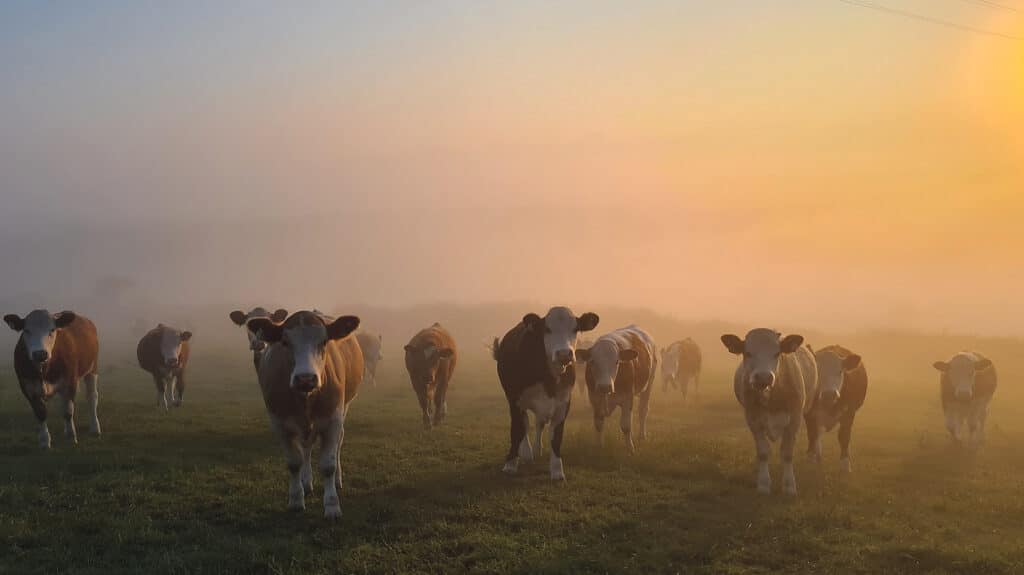
It has been pouring down while I write this but the past month has been unusual, not so much because it’s been dry, but because it was so dry so early. The last few summers have had dry spells, so I’ve become accustomed to dealing with that but they’ve usually been from late June through August and not so much in the first half of the year. Who would have thought there would be water restrictions in Clonakilty before June? In place due to a high demand for water, combined with low rainfall levels, it was something you might expect to see in late July or August during peak tourist season but certainly not at the end of May.
Work on a pipeline bringing water from the Bandon River is expected to be completed later in the autumn, so it should take some pressure off. Maybe the area is a victim of its own success but it’s got me thinking with regard to the future and to do that I need to look to the past.
Until 1980 and the completion of a group water scheme there was no running water in the Ardfield area. Wells and streams were the principal water sources and compared to now that would have limited agricultural output to an extent and also the number of houses in the area.
The advent of piped water played a part in the evolution of the area to what it is now, but maybe due to the extra demand for water I will have to copy some practices from my grandfather’s time. For example, there’s an old rain water collection tank in one yard and I think rainwater harvesting in some form is something I need to consider strongly. Even if it’s only to have a stock of water for power washing or to water down slurry to make it more compatible for Low Emission Slurry Spreading (LESS).
Certainly since 2018 and that year’s drought, I’ve been trying out a few ways to make the farm easier to manage in the event of dry summer.
Five years ago, when grass growth eased up for most of the summer, the round feeder and a bale of silage were the tools to keep pressure off. Last summer an alternative approach worked successfully for the most part. Strip wires and standing crops of grass replaced the tractor, round feeder and bale. Cows might get ahead of the wire on occasion but there was no playing around with cows while you try to open and close a gap or move the feeder. It was only a few extra minutes work and doubled up with checking cows for AI. Burning up a few pounds instead of burning diesel did me no harm either. The calves can go under the wire and pick off the best of the grass too. Over the last fortnight, even though most are just three months old, they’ve been making a big impression on the grass ahead of the cows.
Using that method means there’s always a few back-up paddocks in the event it gets too dry. Fortunately, it doesn’t take much to get grass going again and following rain at the weekend, the option of cutting strong paddocks is back on the cards. What’s in front of the AI group of cows are strong paddocks and strip grazing for the next while but that’s easier than feeding out silage.
Pig tail posts aren’t sliding into the soil with ease but I’ll take little hardships like that over dealing with a washout grazing year any day. With a small bit of rain forecast, I gambled and cut a few strong paddocks on the block where the cows are. Some needed tidying up and while I find it best to have a bank of grass ahead of the cows it’s good to tidy the place a bit too and set it up to get back growing.
Even though weather that is too dry makes management tricky, it’s so much easier than dealing with a summer that is too wet. Farmers can be a tough bunch to please weatherwise. The fact that June was warmer could also lead to issues with grain. I’m hearing reports that some spring crops have begun to head out much earlier than usual and yields are expected to be back compared to last year.
Genotyping
Among the big news stories recently was the commencement of a genotyping programme, which will see the world first genotyping scheme to roll out for Irish farmers. Genotyping will scientifically verify the DNA and breed of animals that are tested. My own herd was a participant in the pilot scheme for this and it proved to be a very useful exercise.
€23m from the Brexit Adjustment Reserve (BAR) fund will fully finance the first year of the new beef and dairy genotyping scheme.
This will be used to genotype (take DNA samples) of up to 800,000 cows, replacement heifers and bulls in the first year of the five-year scheme. After that, funding of €15m annually will be funded jointly by participating farmers, dairy and meat processors and the Department of Agriculture, all of whom will contribute one-third of the costs when the genotyping focus turns to calves. Participating farmers must commit to genotype their calves for a four year period.
Speaking about the scheme, Minister for Agriculture Charlie McConalogue said:
“By harnessing genetic data, the programme will empower Irish farmers to make informed breeding decisions, optimise herd management and animal welfare, and contribute towards Ireland’s climate action targets,”.
Genotyping is expected to cost €18/head, meaning that participating farmers will contribute €6/calf.
Farmers will apply to the Irish Cattle Breeding Federation (ICBF) once the programme opens; it is anticipated that demand will be high for the €83m programme. The closing date for applications is July 14, 2023.



